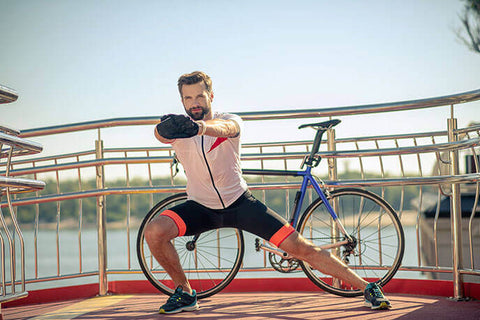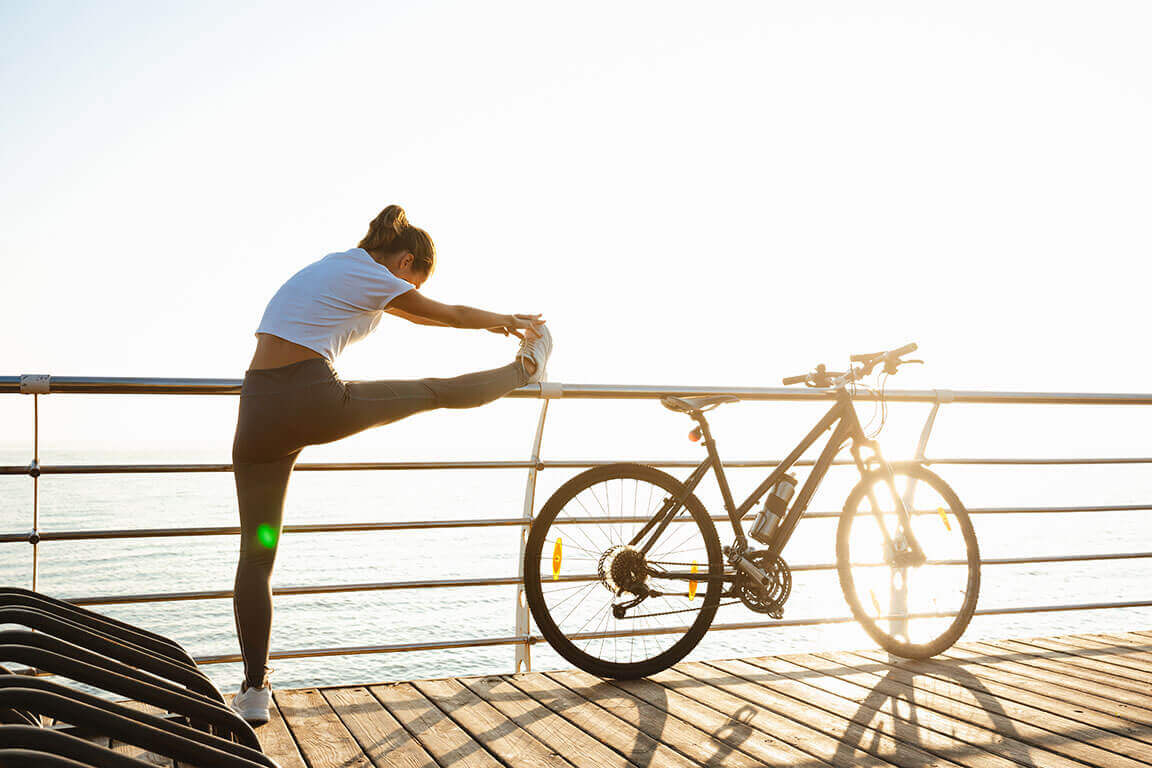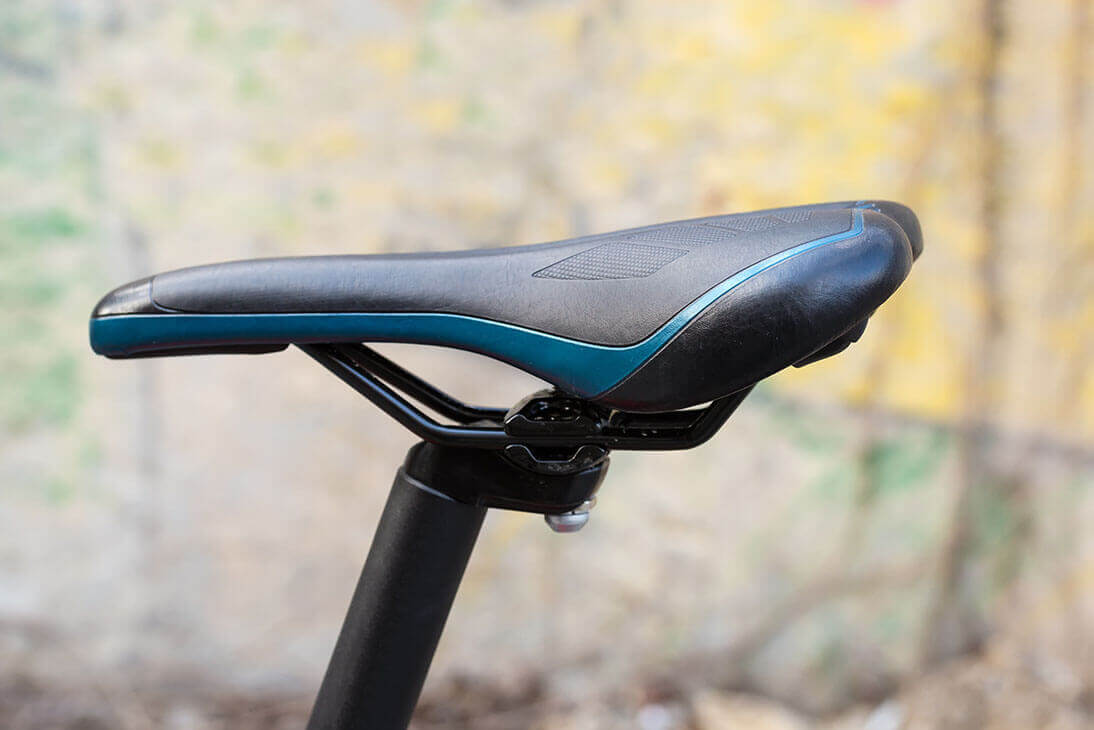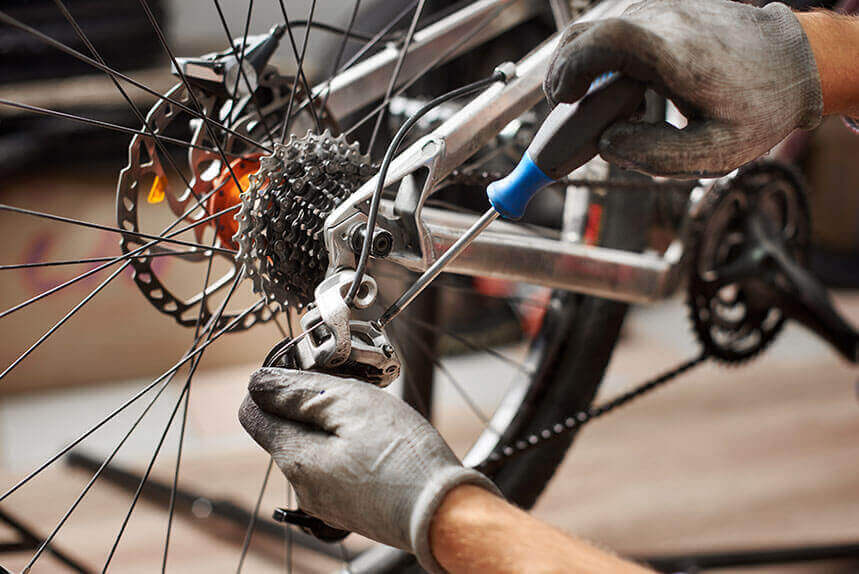When it comes to preserving your health and well-being, stretching sits pretty close to the top of the list. Stretching after cycling provides numerous benefits, like helping to relieve pain, reducing injury, boosting flexibility, and improving range of motion.
However, people make numerous everyday mistakes while performing stretching. Unfortunately, if not rectified, they can lead to long-term injury, which is the last thing you want when riding your bike.
Stretching to most cyclists looks pretty straightforward, and you're probably thinking, what could go wrong? But as you'll see, although stretching is fairly straightforward, there are some common mistakes you need to sidestep.
3 Common Cycling Stretching Mistakes
Here are three stretching mistakes to avoid at all costs to enhance your flexibility, relieve pain, and reduce the chance of serious injury.
Neglecting your warm-up
Now, I know what you're thinking; I assumed stretching WAS the warm-up? To make the most of your cycling stretching routine and avoid a cycling injury, you should look to complete some light cardio.
Activities like skipping rope or jumping jacks are excellent options as they get a substantial amount of blood moving in a small amount of time, particularly important as most of us are time-crunched as it is.
Once your body is adequately warmed up, your muscles start to relax, which means you can get a much more beneficial stretch than when your muscles are stone cold.
Post-cycling stretching is another ideal time to conduct cycling-specific stretches. The boosted blood circulation from cycling increases your body temperature, relaxes your muscles, and helps to decrease the chance of injury.
Next time you jump on your bike, set aside 10 to 15 minutes to warm up correctly and avoid the mistake of neglecting your warm-up.
Please DON’T bounce while stretching
As a professional coach with 20 years of experience working with athletes, the most common mistake I see cyclists make is bouncing during stretching. Unfortunately, although bouncing during your stretch looks harmless, it can result in serious injury.
Generally speaking, bouncing as you stretch can end up in a torn or pulled muscle because the "ballistic motion" can cause your muscles to tighten involuntarily. Bouncing can also force you to "overstretch," placing unwanted pressure on your muscles, tendons, and joints.
Some people stretch for too long, causing many cyclists to "bounce" as they are unable to hold the stretch. The best method to bypass bouncing is to "ease your way" into the movements and hold your position for 15 seconds; anything longer can be damaging to your cycling performance.
Several iPhone apps are specifically designed to help you stretch and recover; however, the trouble is that many of them drain your battery far too quickly. The easiest way to combat this is to purchase a charging case for your iPhone and not just any charging case. Look for an iPhone compatible charging case to guarantee the safety of your valuable iPhone.
Dynamic stretching is another excellent strategy to help stop bouncing and provides a safe and effective mode to acquire a good stretch and has the added benefit of improving your range of motion, which is exactly what we want as cyclists.
Breathe; that’s right, breathe
Breathing is an essential component of stretching, and having the ability to understand just "how it works" and "why it works" will greatly impact the effectiveness of your stretching routines.
Learning to breathe the RIGHT way boosts your blood circulation, delivers oxygen to your cycling-specific muscles, and, most significantly, assists the body in releasing stress and anxiety.
So next time you plan on stretching, breathe deeply through your nose and exhale from your mouth; you'll definitely notice the difference in the way you feel, and you'll be amazed at just how easy the stretches actually become. Trust me; your cycling performance will go through the roof too.
How Should You Feel When Stretching?

If I had a gold coin for every cyclist I've seen overstretching; I'm pretty sure I'd be a billionaire; the good thing, though, is that stretching for cycling is a lot easier than you’ve been led to believe.
That being said, though, I get it; we've been taught to push ourselves to the limits no matter what we do, and that includes stretching; unfortunately, nothing could be further from the truth when it comes to stretching.
As I mentioned earlier, the most effective way to stretch is to ensure that you're not bouncing while stretching. Just as in cycling, you should never push your body past its natural limitations when stretching. Do your best to hold your stretches for 10 to 15 seconds, and if at any time you feel pain, stop. A little bit of "uncomfort" is totally normal, although it might take some time to decipher between pain and being uncomfortable.
Lastly, always stay well within your ROM or Range of Motion; this will help ensure you don't overstretch your muscle, resulting in further damage and more time away from the bike; the last thing any cyclist wants.
Never Stretch An Injured Muscle
Amongst us cyclists, soft tissue injuries are pretty common, and most of us just accept it as "part of the deal." Now, here's the rub; what do most cyclists do when they have an injured leg or back muscle? That's right; they stretch it out, the absolute LAST thing you want to do.
Stretching a muscle that is already damaged will only further harm it. Subsequently, you'll end up in a much worse position than when you first started; in fact, overstretching an already damaged muscle can lead to serious long-term damage, particularly to the tendons and ligaments of the knee.
If you do have an injured cycling muscle, then you should be using the RICER protocol to help speed up recovery.
Rest
Ice
Compression
Elevation
Referal
By following the RICER protocol, you can give your body the best possible chance of recovering as quickly as possible. That being said, don't rush the recovery process; although we love riding our bikes, if we're not in tip-top condition when we ride, another injury is waiting around the corner.




Leave a comment
This site is protected by hCaptcha and the hCaptcha Privacy Policy and Terms of Service apply.